Star jasmine is a fast-growing and fragrant evergreen vine that not only gives you great coverage & privacy as a climbing or creeping vine, it also bursts into blooms with incredible-smelling flowers in the spring. The plant is native to Asia, but is incredibly popular in the Southeastern United States and areas of California. In warm environments like these, star jasmine is also super easy to care for and grow. Just another reason we love it!
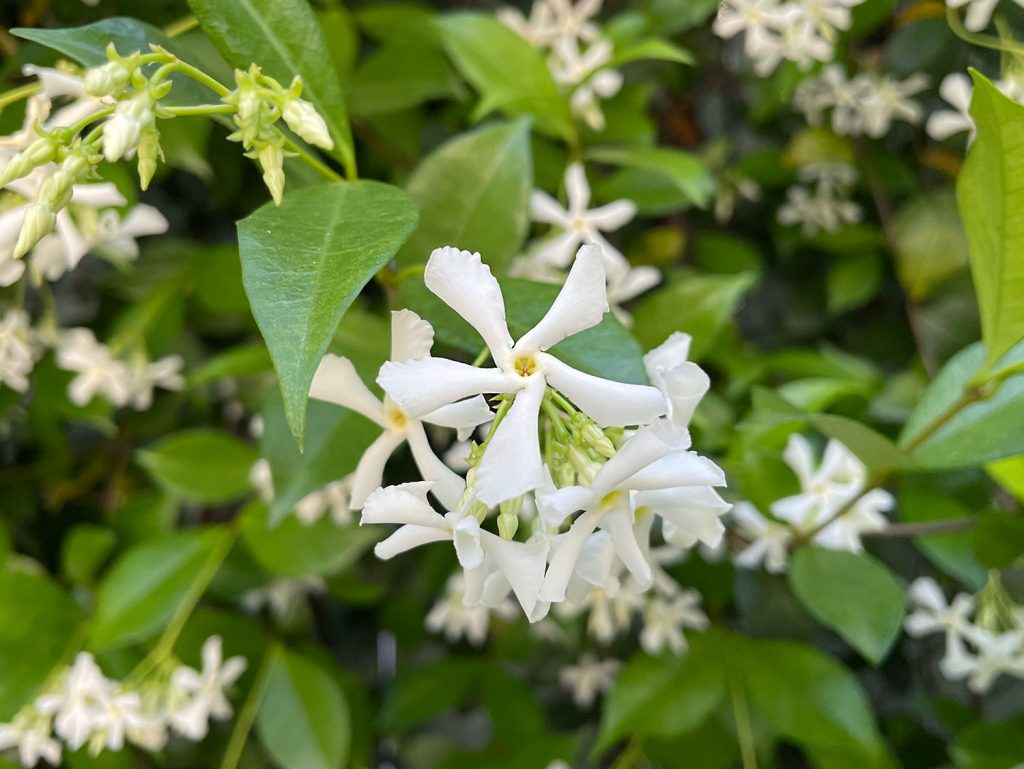

Star jasmine can grow as a dense ground cover, but we prefer to use it as a climbing vine. This does require a trellis, pergola, stakes, or some other structure for it to grow up. Those are easy to make and we have DIY tutorials for a wire trellis on a wall as well as a freestanding privacy trellis.
Star Jasmine Quick Facts
Here’s what you need to know about star jasmine at a glance:
- Latin name: Trachelospermum jasminoides
- Plant type: Evergreen climbing vine
- Flowers: White star-shaped blooms in late spring & early summer
- Sun exposure: Full sun to part shade
- Growth rate: Fast-growing (3 to 6 feet per year)
- Mature size: Up to 20 feet
- Soil: Well-draining loamy soil. Neutral to slightly acidic pH.
- Hardiness Zones: USDA Zones 8-12
- Native area: Asia
What Is Star Jasmine?
Star jasmine (Trachelospermum jasminoides) is an evergreen, climbing vine that – surprise! – isn’t technically a jasmine. While they share many similarities, including their lovely scent, other jasmine are members of the Jasminum genus and are related to olives (family: Oleaceae). Star jasmine is part of the Apocynaceae family, commonly called Dogbanes, which includes flowers like oleandar, milkweed, and frangipani.
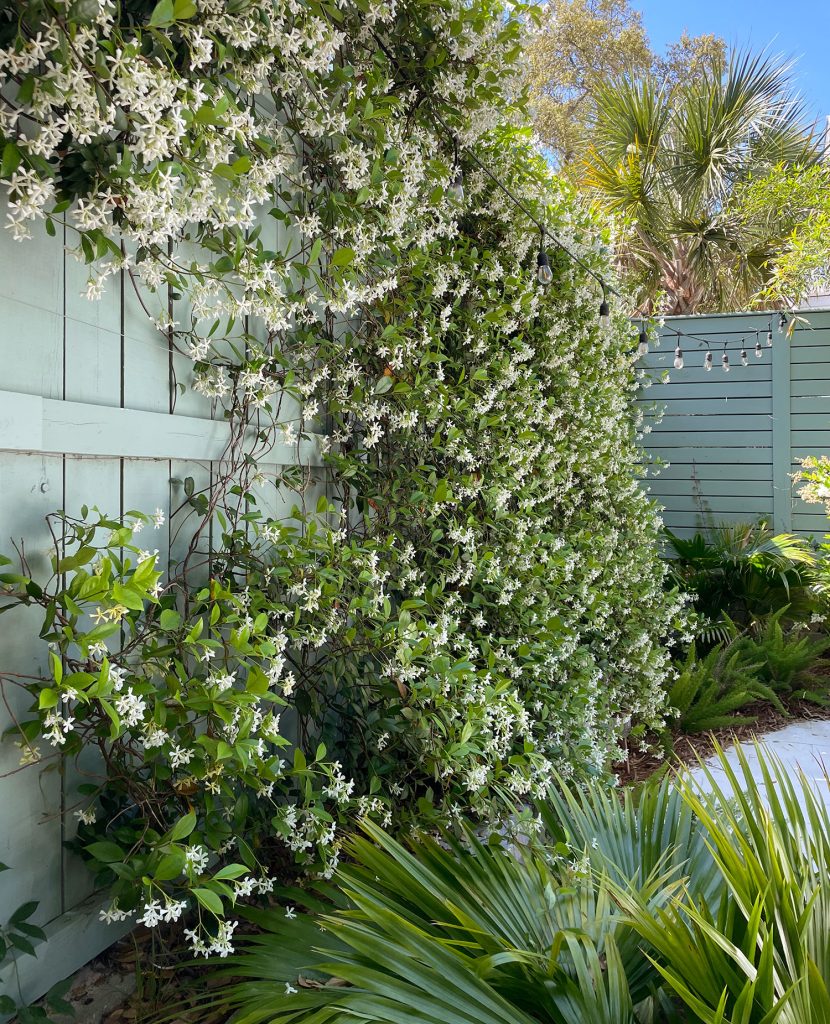

Science talk aside, star jasmine is a popular outdoor plant in warmer climates (USDA Zones 8-12) because it grows fast, stays green all year round, and produces a blanket of small fragrant flowers in the spring and early summer. These flowers are typically white or cream and their star shape is how this plant got its name. It was formerly called confederate jasmine due to its popularity in the southeastern United States.
How To Grow Star Jasmine
Successfully growing star jasmine in your yard is really about placement. After that, they require little thought or care – apart from the occasional pruning. Here’s what you should keep in mind.
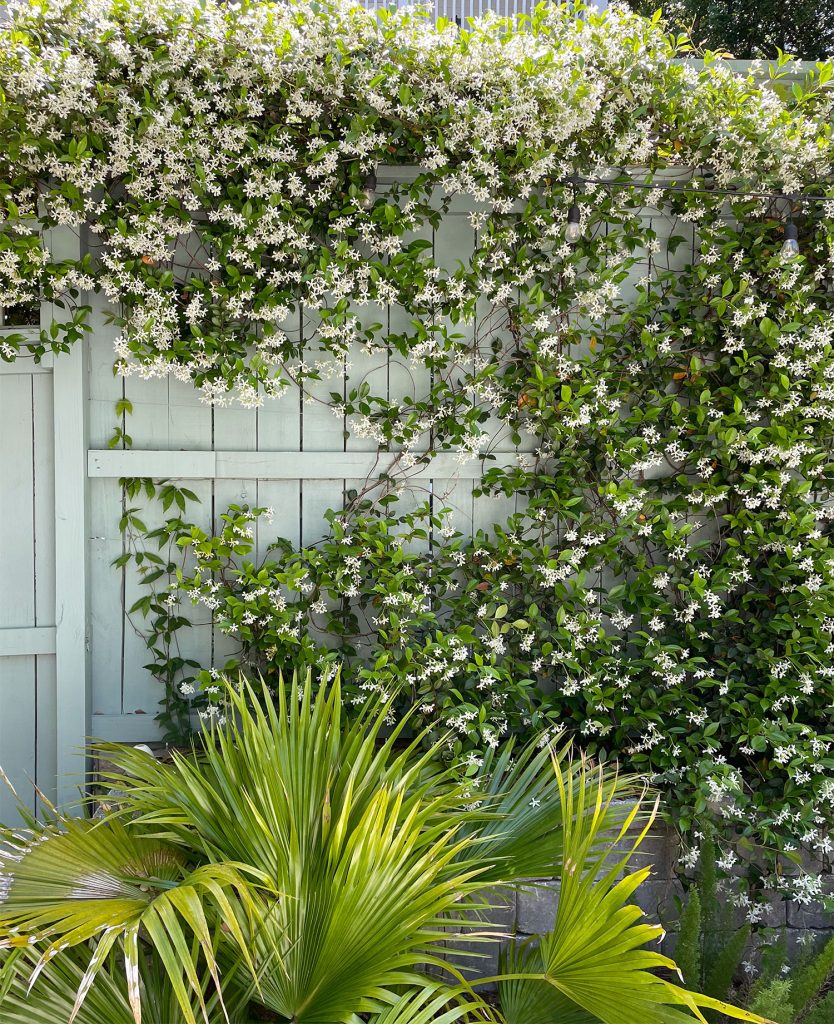

Sunlight
Star jasmine thrives best in full sun, but also does well in partial shade. The sunnier your location, the faster it will grow and the more flowers it will produce in the warm months. It’s grown in a variety of conditions around our neighborhood, including ground cover in the shade of large trees. However, we’ve gotten the fastest results in areas that get 4+ hours of direct sunlight.
Soil
Star jasmine isn’t too picky about what soil it grows in, but loamy soil that drains well is best. Our soil here in NW Florida is fairly sandy, but it still grows really well in this area. We always mix in standard garden soil when planting a new plant, just to be safe. It tolerates a range of pHs too, ideally neutral to slightly acidic (6.0 – 7.0).
Watering
Star jasmine is relatively drought tolerant but does benefit from regular, deep watering – especially in its first year while it is establishing and during its growing seasons (spring and summer). We water any new plantings every 2-4 days for the first few weeks, and then weekly for the following months. Once established, we typically only water if our area is experiencing a drought. Just take care not to overwater, especially in containers, because it doesn’t like to sit in wet soil.
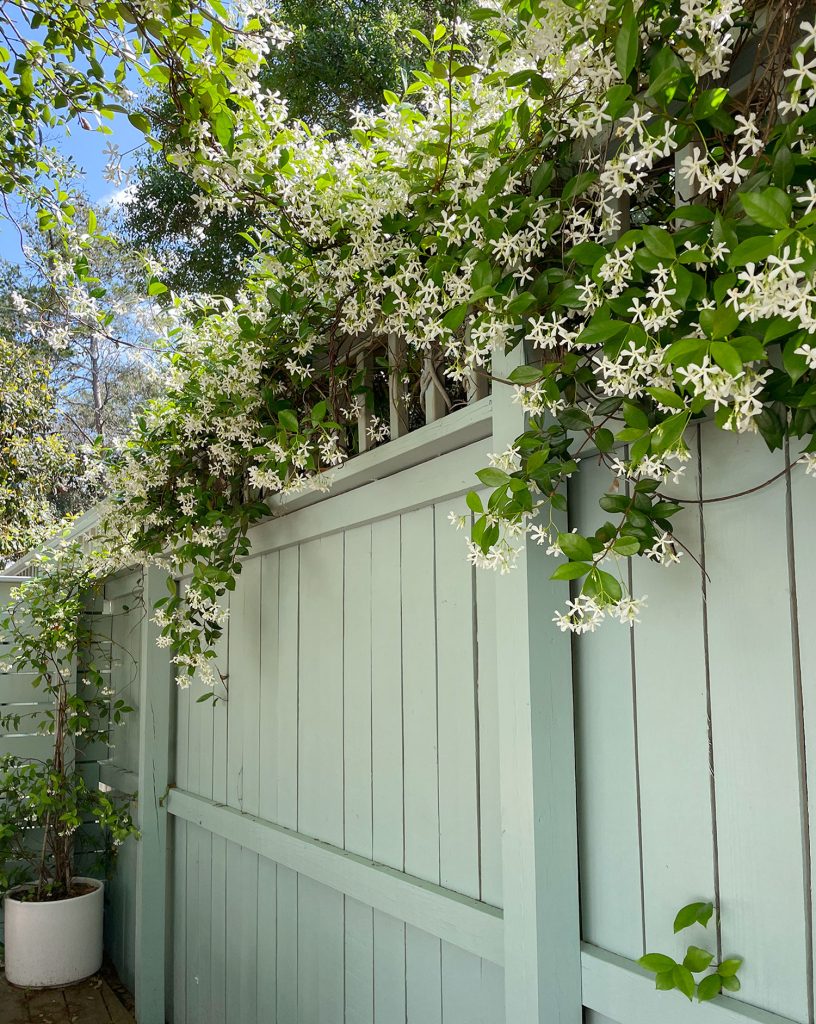

Containers
This hardy vine can be grown in-ground or in containers. We have it in both, with equal success. You can see some in the pot above on our backyard deck. Containers are a great way to establish star jasmine on a porch, near a fence, or under a pergola. We even planted some in a raised planter box to create a privacy trellis on our upstairs deck!
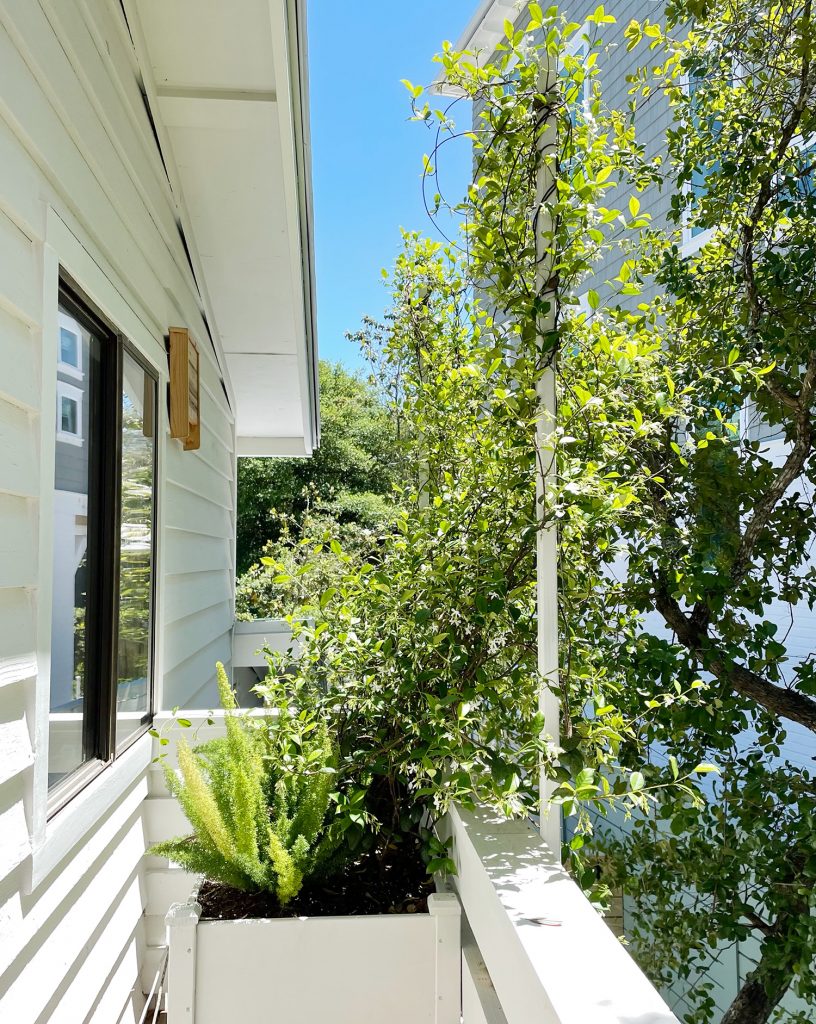

Temperature and Humidity
Star jasmine is best suited for moderate or warm climates, specifically USDA Hardiness Zones 8-12, where you also experience higher humidity. It blooms best in 60-75º weather. It can survive brief dips into temperatures as low as 10º, although we lost a few vines during the 2022 cold snap which included several days in the mid-teens. Several leaves browned and fell off, but the plants fully recovered by the next spring.
Star Jasmine Growth: Before & After
Star jasmine can look a little scraggly in the first year or two as it establishes. For example, we recently planted one on a wire trellis in our backyard where a beautiful but finicky bougainvillea died after a cold snap. You can see we’ve stretched and wrapped the vines to encourage it to fill out over time. For now, it blooms, but it’s looking a bit sparse.
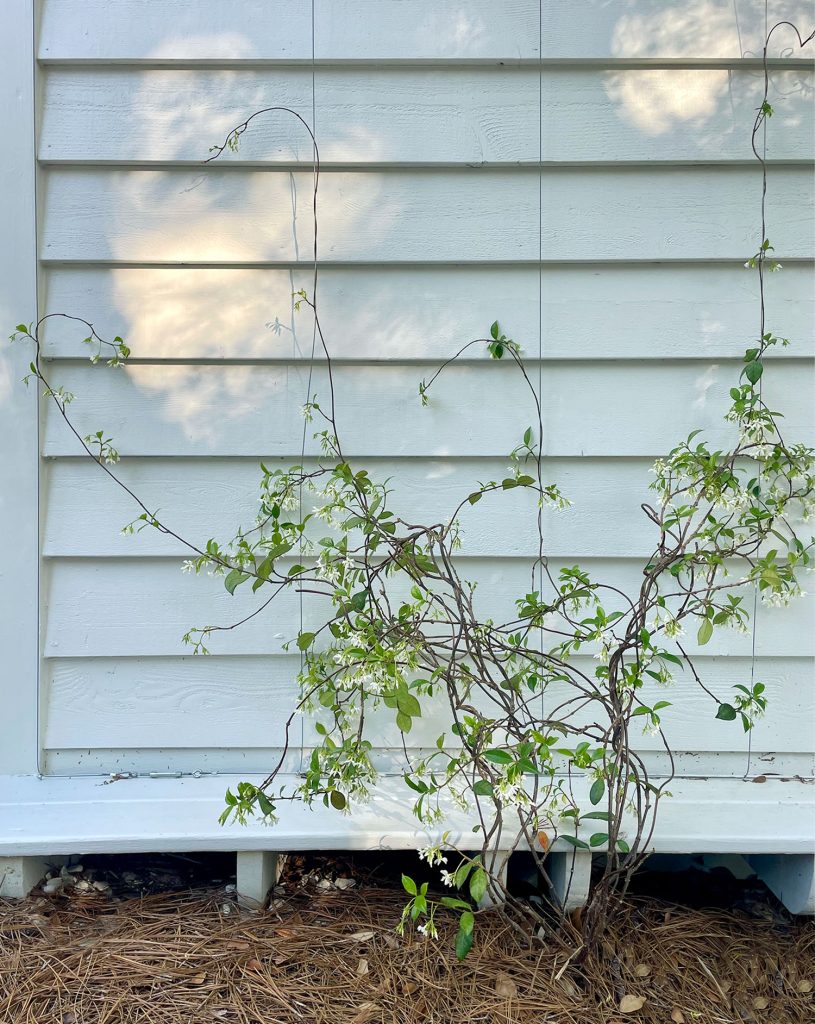

But be patient, and it will pay off! Just look at the before & afters of the star jasmine we planted behind our pool. We dug it into the narrow section of soil above our retaining wall. Our neighbors’ star jasmine was already spilling over the top of our shared fence, so we wanted to join the jasmine party. You can see more photos of this space in our pool before & after, but below is how it looked about 3 months after we planted it.
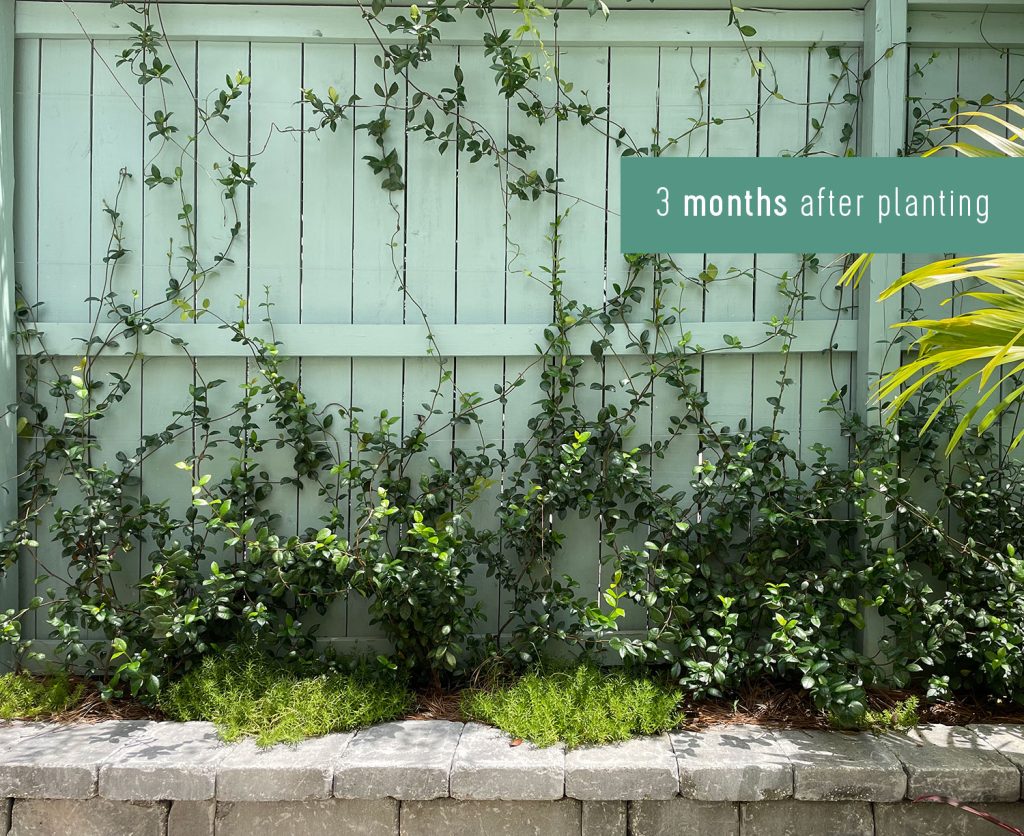

Here is what it looks like now, roughly 3 years later. I swear it’s the same space!
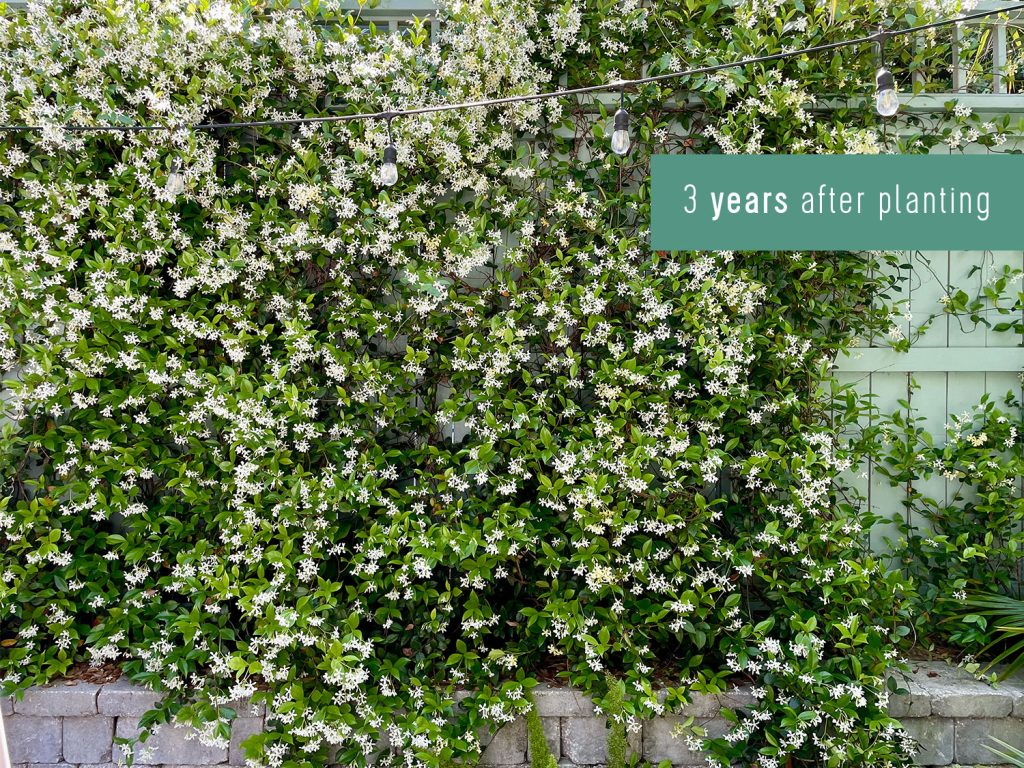

We did add some wires across the back of the fence to help the vines climb vertically. Over the first year or two we manually moved and wrapped vines so they went upward, not outward, but it was easy and kind of fun to do. They say in the first year of growth a plant sleeps, the second year it creeps, and the third year it leaps, but jasmine is so fast-growing it was leaping by year two! So you won’t have to wait that long, especially if it’s a sunny area.
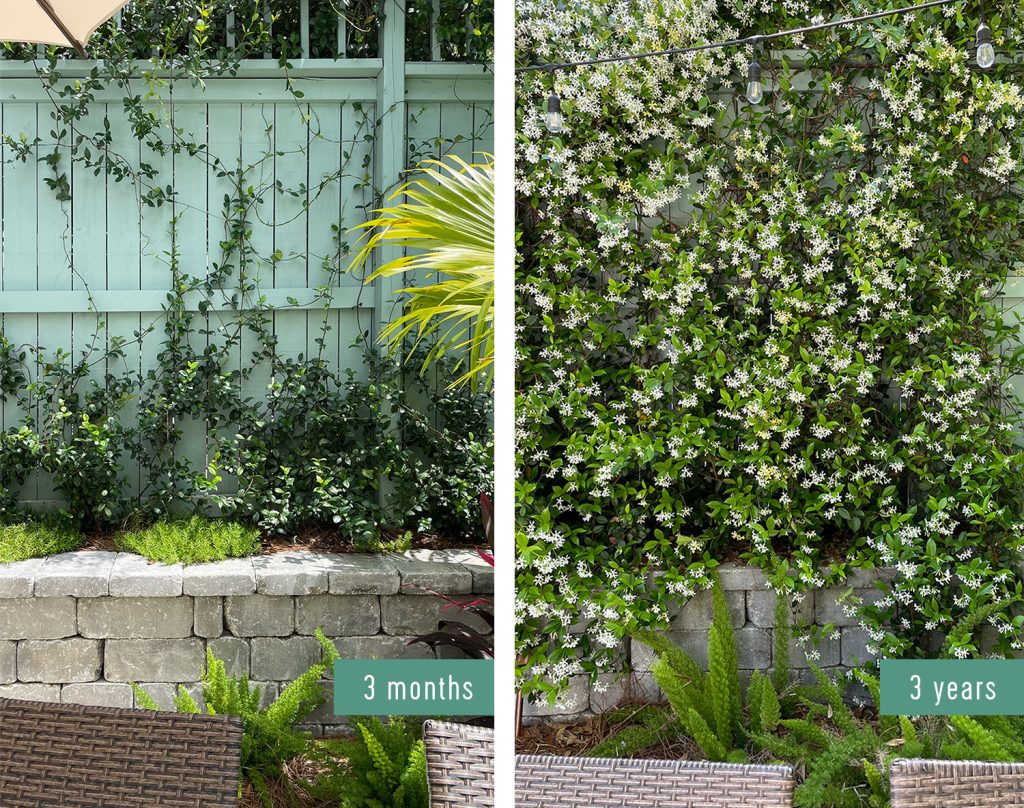

We absolutely love this wall of greenery. Most of the year it looks almost like a solid hedge (even in the winter!) and in the spring when it flowers, it smells AMAZING. The sweet scent fills the entire backyard. It doesn’t require much care at this point, which makes it that much better!
Routine Care
Once your star jasmine has established itself, we find that it requires very little regular care. Here are the main things that we do to ours:
- Pruning: You will occasionally need to trim your vines to control the growth, size, and shape of your plant. It’s best to prune after its flowering season and be sure to use clean sharp clippers. You can also prune any dead or diseased vines at any time. The plant excretes a milky white sap that can be sticky and mildly irritating, so protect your skin as needed.
- Fertilizing: We haven’t needed to fertilize any of our jasmine, but some people choose to use a balanced slow-release fertilizer to boost growth. This is best applied before the spring when it flowers.
- Watering: If we are experiencing periods of drought, we water our jasmine along with our other outdoor plants – typically a deep watering once a week if it has been extra dry.
Other Star Jasmine FAQs
Is star jasmine poisonous to dogs?
The ASPCA considers star jasmine non-toxic to cats and dogs. The milky white sap excreted from a cut vine or stem, however, can be mildly irritating to some people’s skin.
Does star jasmine attract bees?
Yes! Star jasmine is great for attracting bees thanks to its strong, sweet-smelling flowers. It’s also great for attracting hummingbirds. If you are trying to attract more pollinators to your garden, this is a great addition.
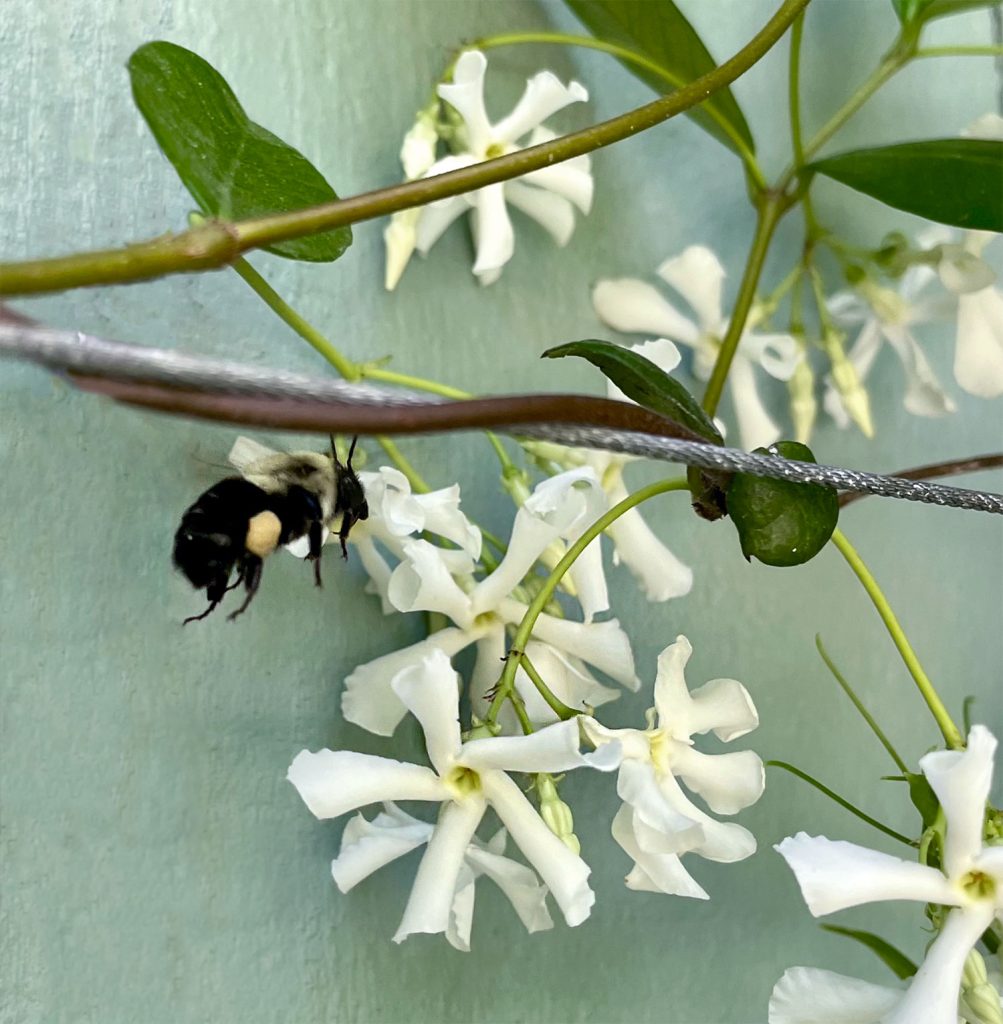

Is star jasmine invasive?
Star jasmine is a fast-climbing or spreading vine, so it can be considered invasive to some – especially as a ground cover. You may need to prune it back regularly to keep it from spreading. These vines don’t stick or adhere to surfaces (they wrap around themselves) so it’s fairly easy to remove it from any areas where you don’t want it.
Are jasmine and star jasmine the same thing?
No! Although they look fairly similar, these are two entirely different plants. Jasmines are members of the family Oleaceae (Olives) and genus Jasminum. Star jasmine is a member of the family Apocynaceae (Dogbanes) and genus Trachelospermum. This makes star jasmine more genetically similar to plants like milkweed, natal plum, frangipani, and oleander,
More Plants We Love
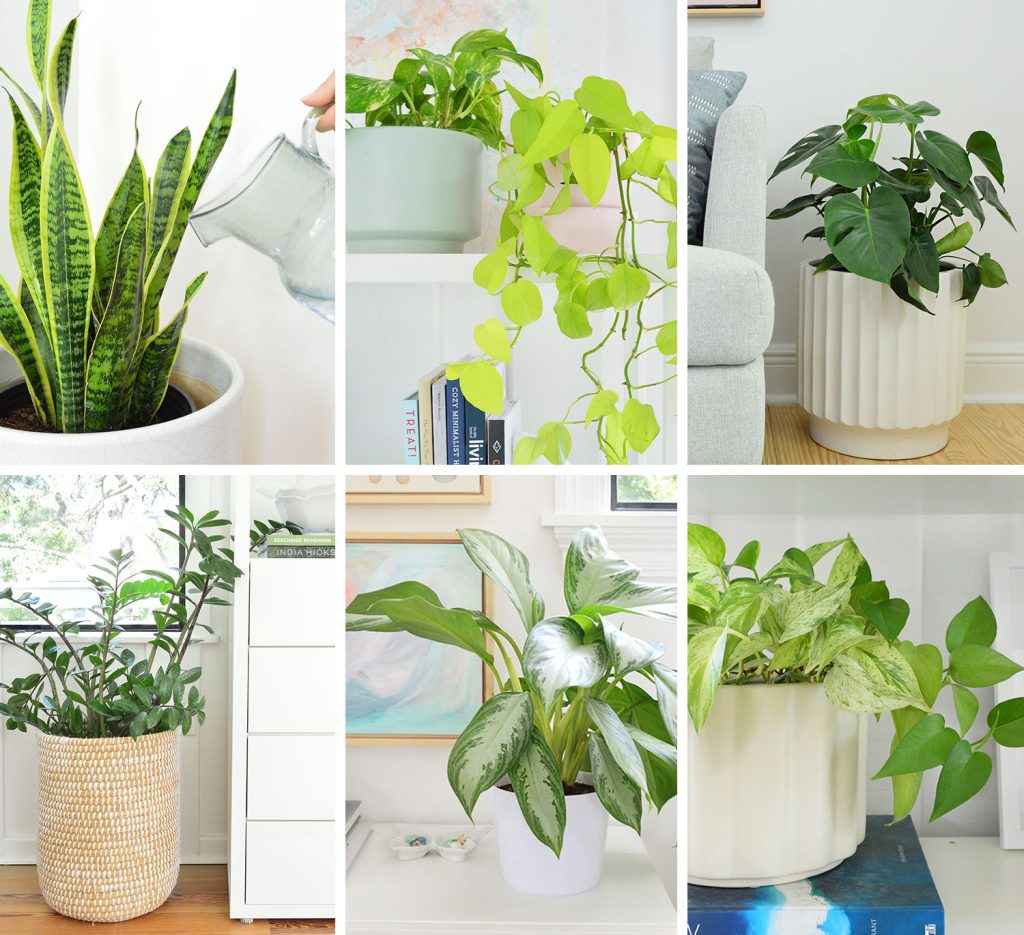

If you’re looking for more information on some of our favorite plants (real and faux!) check out some of these posts below:
*This post contains affiliate links, so we may earn a small commission when you make a purchase through links on our site at no additional cost to you.










